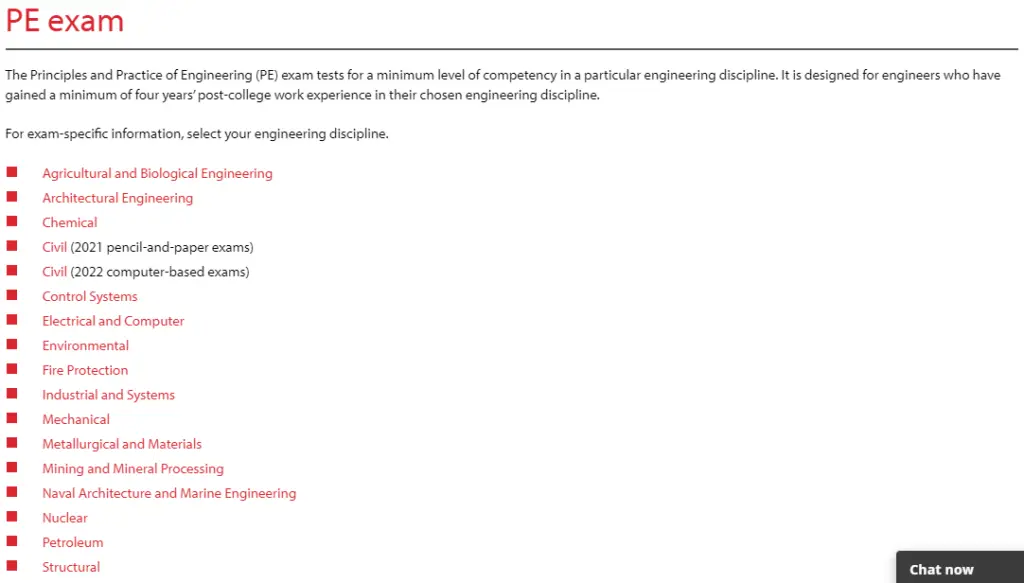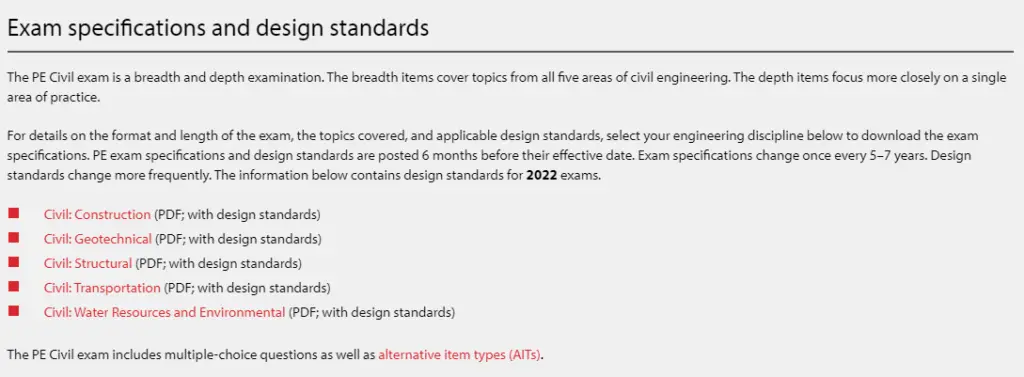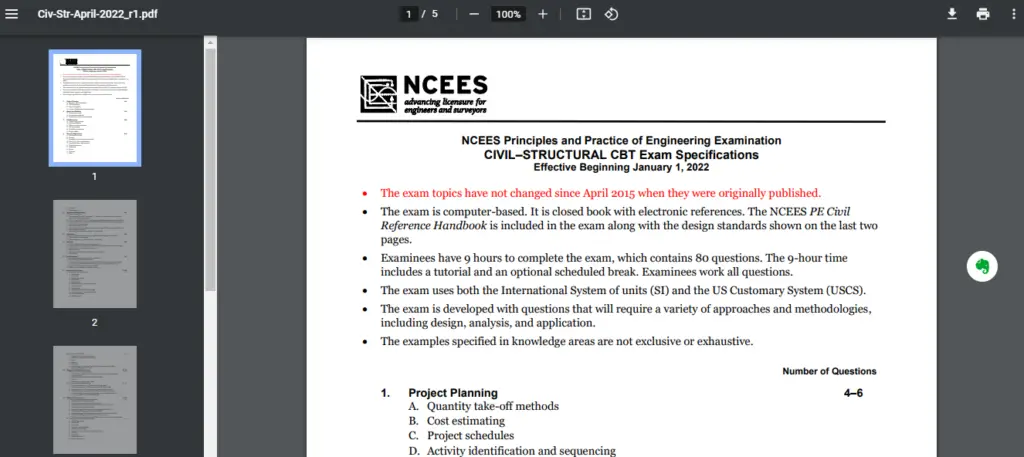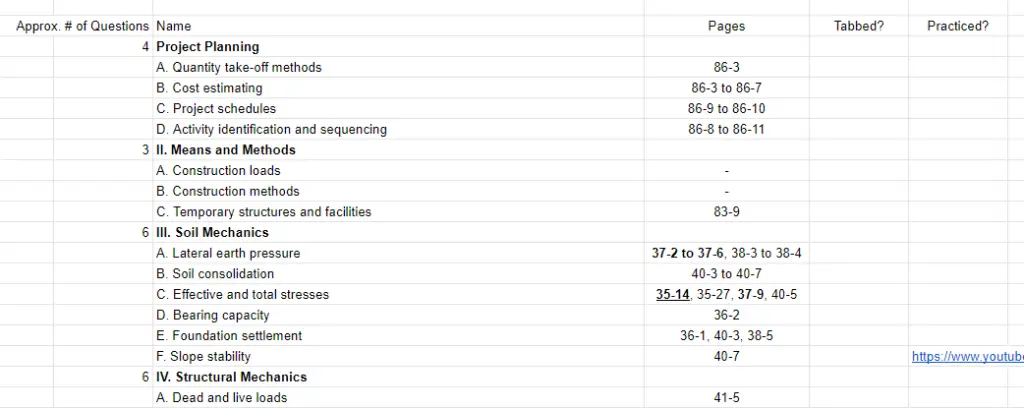The organization that administers the PE Exam does not release the actual questions of the PE Exam. They will, however, give you details on which topics are on the exam and roughly the amount of questions you’ll see on each one as well as the design standards (codes) you’ll need for the exam.
If you want to see some of the questions on past PE Exams and use them to practice, you can get the NCEES Practice Exams.
In this article, I’ll show you the step by step process for finding out what topics are going to be on your specific PE Exam so you can make sure to study all the right topics that you need to know to pass.
3 Steps to Find Out What the PE Exam Covers
Here are the simple steps to finding out what you’ll need to be prepared for when taking the PE Exam:
- Head to the NCEES PE exam information page and select your exam.

- Once on the specific page for your PE Exam (I selected PE Civil since that’s what I took), scroll down to “Exam specifications and design standards.”

- Click on your specific discipline and you’ll be shown the PDF of the topics that are covered on the exam, including roughly the amount of questions for each and the design standards (code books) that you’ll need.

If you want to download these specifications, just click on the down arrow in the upper right-hand corner of the page.
Also note that these specifications change from time to time, so make sure that you always check that you have an updated copy!
How to Use The Design Standards to Make Studying for the PE Exam Easier
The best part about being able to have these design standards is that they act as a guide that tells you exactly what you need to study to pass the PE Exam.
Before I even started studying for the PE Exam I familiarized myself with these design standards, which made studying so much easier. Even better than that, I took all of them and put them into a spreadsheet so I could make sure that I had covered all of the topics by checking off each as I studied it.

If you don’t want to go through all this trouble, however, just buy a course. They do all this for you and you don’t even really have to worry about what’s on the exam. I took School of PE and they were so good that I knew how to answer every question on the morning session and it felt easy!
Whether or not you purchase a course it’s a good idea to be really familiar with the design standards. You’ll at least need to know them so you know what codes you need to know for the PE Exam.
When I took the PE Exam it was open book, so I could take in all kinds of notes. While I was studying I would refer to my design standards spreadsheet and add notes for where to find the information on each subject.
That won’t really work anymore though since all PE Exams are now computer-based. You might still try it as you study so that you can review all material before taking the exam, which I would recommend.
But even better than that, make sure to use it along with the PE Reference Handbook to optimize your study. You may not get to bring notes to the PE Exam, but you will get access to a searchable reference handbook that you’ll need to know really well if you want to pass.
If I were studying for the computer-based PE Exam today, I would still make that spreadsheet like I did so I had a study guide to know that I was ready for everything that would be on the exam. Instead of adding notes on where to find the info on that topic, I’d focus on adding the corresponding sections of the PE Reference Handbook for each exam topic from the NCEES Exam Specifications.
I would carefully go through each section in the PE Reference Handbook to make sure that I understood that topic, then check off that same section within the design standards to make sure that I was covering everything that was going to be on the PE Exam.
Wrapping Up
You don’t need to know the exact questions that are going to be on the PE Exam because the organization that administers the tests will tell you what topics to study for it.
These design standards are the perfect study guide that you can use to make sure you’ve studied everything you need to know to pass the PE Exam, and I’d highly recommend you familiarize yourself with them.

